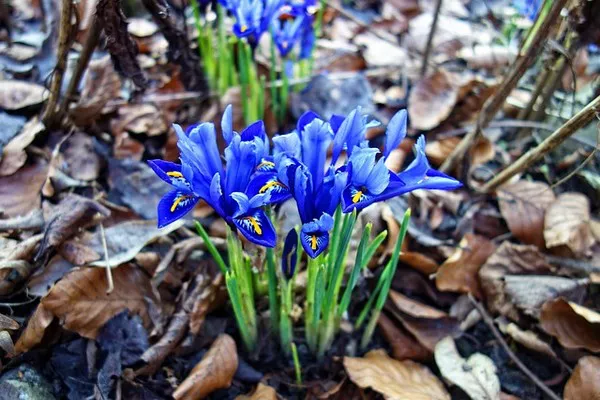Blue flowers hold a unique allure in the world of flora, captivating us with their serene and calming presence. These delicate blossoms come in a variety of shades and sizes, each with its own distinct charm. In this article, we will explore the enchanting realm of blue flowers, delving into their names, characteristics, and the wondrous beauty they bring to gardens and landscapes.
See Also: Exploring the World of Blue Flowers: A Botanical Marvel
1. Delphinium (Delphinium spp.)
Names and Varieties
Delphiniums, also known as Larkspurs, are a group of stunning flowering plants that grace gardens with their tall spikes of blue blossoms. Varieties such as ‘Pacific Giants’ and ‘Summer Skies’ offer shades ranging from deep indigo to soft periwinkle, adding vertical elegance to flowerbeds.
Characteristics
These flowers are known for their tall stalks, resembling a playful dolphin’s nose, which inspired their name. Delphiniums thrive in well-draining soil and sunlight, displaying their vibrant blue hues during the summer months. Their captivating presence makes them a favorite among gardeners seeking to add vertical interest to landscapes.
2. Forget-Me-Nots (Myosotis spp.)
Names and Varieties
Forget-Me-Nots, with their dainty and charming appearance, are renowned for their soft blue petals with delicate yellow centers. These flowers are often seen in woodland settings and cottage gardens. Varieties like Myosotis sylvatica and Myosotis scorpioides offer a range of blue shades.
Characteristics
Forget-Me-Nots hold sentimental value, symbolizing true love and remembrance. They thrive in moist, shaded areas, making them perfect for woodland gardens. Their petite size and delicate blooms make them a popular choice for adding a touch of whimsy to garden borders and rockeries.
3. Hydrangea (Hydrangea spp.)
Names and Varieties
While commonly associated with pink and white blooms, certain varieties of Hydrangeas can produce mesmerizing blue flowers. Varieties like Hydrangea macrophylla ‘Nikko Blue’ and ‘Endless Summer’ showcase vivid blue petals that delight the eye.
Characteristics
The color of Hydrangea flowers can be influenced by soil pH, with acidic soils resulting in blue hues. These flowering shrubs are prized for their large, showy clusters of blooms, making them excellent choices for creating stunning focal points in gardens. Hydrangeas require consistent watering and thrive in partial shade.
4. Gentian (Gentiana spp.)
Names and Varieties
Gentians are known for their intense, deep blue petals that create a striking contrast with their lush green foliage. Varieties such as Gentiana acaulis and Gentiana scabra showcase the captivating blue shades this flower offers.
Characteristics
Gentians are alpine plants that thrive in cooler climates and well-drained soil. Their vibrant blue petals often attract pollinators, making them a valuable addition to pollinator-friendly gardens. Due to their preference for cooler temperatures, they are commonly found in rock gardens or areas with high altitudes.
5. Morning Glory (Ipomoea spp.)
Names and Varieties
Morning Glories are known for their trumpet-shaped blooms that open in the morning and close in the afternoon. Varieties like Ipomoea tricolor ‘Heavenly Blue’ showcase brilliant blue flowers with a contrasting white throat.
Characteristics
Morning Glories are climbing vines that add a touch of romance to gardens and trellises. Their rapid growth and dazzling blue blooms make them a favorite among gardeners seeking to cover fences and vertical structures with a burst of color. These flowers thrive in full sun and well-draining soil.
Conclusion
The world of blue flowers is a realm of beauty, diversity, and elegance. From the graceful spikes of Delphiniums to the delicate charm of Forget-Me-Nots, each blue flower adds its own unique character to gardens and landscapes. Whether you’re seeking to create a serene ambiance or add a pop of color to your outdoor space, blue flowers are a wonderful choice. Embrace the magic of these blooms as they grace your garden with their enchanting shades of blue.


